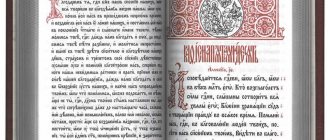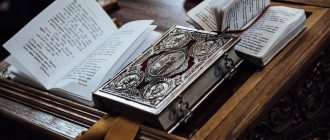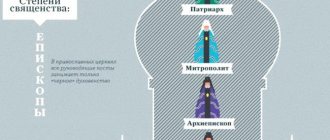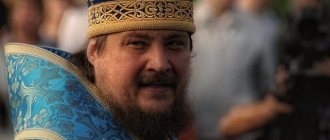Orthodox Christians believe that the only head of the Church is Jesus Christ. This position is based on information from the Holy Scriptures. The first bishop after the Son of God in rank in a local church is usually called the primate of the church. An example of this in the Russian Orthodox Church is the Patriarch of Moscow and All Rus'.
But, in addition to this, another term is applied to the primate - the head of the Russian Church. There are other names that are found on the official website of the Russian Orthodox Church and on other church resources. So, for example, there is the concept of head of the Russian Orthodox Church, which also relates to its primate - the patriarch. It is the last position that will be discussed.
Who is the patriarch?
Patriarch of Moscow and All Rus' - this title is borne by the primate of the Russian Orthodox Church. At different times, different versions of this name were used. Modern was used both in ancient times and now to designate all patriarchs, but it became the official title when Sergius (in the world - Stragorodsky) was elected to the throne of Metropolitan in 1943.
The Patriarch is the ruling bishop (that is, the highest rank) of the Moscow diocese, which includes the city of Moscow and the region. But, in addition to this, according to the charter of the Russian Orthodox Church, he has a number of church-wide powers inherent in the head of the Orthodox Church. They will be discussed in more detail below.
The year of establishment of the patriarchate was 1589, the city was Moscow, the first patriarch was Job. In 1721, the patriarchate was abolished, and then it was restored in 1917. This was done on the basis of the decision of the All-Russian Local Council.
Bartholomew I
Today there are 15 autocathedral churches. The Russian Orthodox Church is in 5th place in this hierarchy. The first step is occupied by Constantinople. And this is no coincidence: according to the historical development of events, the throne of Constantinople is indeed the first in the Orthodox community. The position of the Church of Constantinople is absolutely not affected by the fact that its flock numbers about 2 million people, and the parishioners of the Russian Church range from 50 to 100 million.
The official website of the Moscow Patriarchate states that since 1991, the title of His Holiness Archbishop of Constantinople - New Rome and Ecumenical Patriarch has been borne by Bartholomew I. At the moment, Bartholomew I is the “first among equals” of the heads of the remaining Orthodox churches.
How is he elected?
As the current church charter of 2000 states, the rank of patriarch is assigned for life. Issues regarding the trial of the patriarch and his departure from service are decided by the bishops' council.
At a time when the patriarchal see is not occupied by anyone, the Holy Synod from among itself nominates a locum tenens for the patriarchal throne. Then, after a period not exceeding six months, after the throne has become vacant, the synod and the locum tenens convene a local council, called upon to elect the next head of the Church.
What does it mean?
The decision of the Synod of the Russian Orthodox Church on non-commemoration of the Patriarchate of Constantinople can be called the church equivalent of a severance of diplomatic relations, Hilarion said.
“We are temporarily suspending all communication with the Patriarchate of Constantinople,” he said. Read on RBC Pro
Expensive money: how an investor should respond to rising inflation
On Elon Musk's bookshelf: 6 favorite books of the founder of Tesla and SpaceX
How and for how much to buy a residence permit abroad: analysis of investment programs
There are fewer people in Russia. How does this threaten the logistics market?
Chairman of the Department for External Church Relations of the Moscow Patriarchate Hilarion (Photo: Mikhail Metzel / TASS)
During the service, the heads of local churches “remember” each other - they list the names of the primates of other autocephalous churches. The names are mentioned in order of honor, the so-called diptych. The first on this list is traditionally the Primate of the Patriarchate of Constantinople.
Interrupting a commemoration is an extreme form of protest, rejection of the actions of another local church, Archpriest Andrei Novikov explains to RBC. “With this gesture, our church shows that it no longer considers Patriarch Bartholomew to have any power over the Orthodox. His status no longer matters. If he violates the canons, his commemoration is interrupted. We no longer pray for him in our church. For us personally at the moment he is persona non grata,” he said.
The Polish Orthodox Church urged not to rush into autocephaly of the UOC Politics
After the severance of diplomatic relations, the Russian Orthodox Church will no longer take part in episcopal assemblies in countries of the Orthodox diaspora and in “theological dialogues,” the Russian Orthodox Church said in a statement.
Requirements for candidates
In order to be elected patriarch, a candidate for this position must meet certain parameters, including:
- Age – at least 40 years.
- Having a higher education in theology.
- Presence of sufficient experience in diocesan administration.
It should be noted that the criteria, as well as the procedure for election to the Russian Orthodox Church, are periodically revised. For example, in 2011, a church body such as the Presidium of the Inter-Council Presence reviewed a draft document concerning these issues. After this, this project was sent to the dioceses to collect feedback, and it was also made public in order to organize a wide discussion.
The election process was first detailed in one of the internal normative documents of the Russian Orthodox Church - a special provision that was adopted by the Council of Bishops on 02/05/2013.
Meaning of the concept
As mentioned above, a bishop is a clergyman who has the highest rank. (bishop-clergy-deacon). He belongs to the highest degree of priesthood. Only after some time did even more titles appear that are equal to bishop:
patriarch, metropolitan, bishop, etc.
In the Orthodox Church, monks from the minor schema are selected for this rank. As a rule, candidates are single. This rule dates back to the 7th century. Even if a candidate for such a high rank was married, the couple separated of their own free will. After the ordination was carried out, the ex-wife was sent to a remote nunnery.
Dear brothers and sisters! We invite you to visit the unique resource https://www.slovo-pomoshi.ru/. With its help, you can convey your aspirations to St. Petersburg churches, chapels, monasteries, and also contact the righteous at the place of their burial. We will write a note ourselves, take it to the temple and send you a photo report by email. Turning to God with the help of prayers has helped many people overcome grief, regain health and the joy of worldly life.
Useful articles:
WHAT CHRIST DID FOR US (EXAMPLE) The year was 1919. A regiment of Red Army soldiers stopped near the old count's estate. Late in the evening there was a knock on the door of the house. When the countess opened the door, she saw that a nurse was standing on the threshold. “Hello,” she said, “I accidentally saw how the lists were compiled... Read more
“MOTHER’S ORDER BEFORE DEATH” (be sure to read this note) “Pray for me, child, when I am no longer with you, Don’t drink wine for me, pray in your own words. Take to the poor all that you collected for the luxurious funeral, And I don’t need dead wreaths, you give me a wooden cross. In the bright Temple, my beloved, where the prayer is... Read more
We often grumble: “Why do I have such misfortunes?” We often grumble: - Why do I have such misfortunes? And why do the Mother of God have seven wounds (sorrows) like this? If every day you make at least one bow to the Mother of God, she will not let you go, she will take you under her protection and bring you to the Kingdom of Heaven. If you offended your mother and she cursed you or... Read more
WHAT TO DO WHEN IT'S HURTING? What to do when you are offended and when you cannot cope with the offense? Once the Optina elder Nikon received a letter with insults and abuse. The elder thought: “Who could have written this? Who is the letter from? “But he immediately pulled himself together: “Nikon, this is none of your business, there is no need to interrogate... Read more
Cases of election in the 20th century
Let us give several examples of how individual patriarchs were elected in the 20th century.
- Metropolitan Tikhon was elected to the patriarchal throne by drawing lots. In this case, the choice was made from three candidates previously approved by the local council.
- At a time when there was strict state control over church affairs, three patriarchs, such as Pimen, Sergius, Alexy I, were elected through an open, uncontested vote, with mandatory approval from the government.
- Alexy II was elected by the local council in 1990 by secret ballot. In the 1st round, the participants were three candidates who had previously been approved by the bishops' council. Then the local council was given the right to add other candidates to the list. In the 2nd round, 2 candidates participated, who received the majority of votes in the previous round.
The role of the bishop in the church, rules of conversion
In addition to performing Divine services, bishops have the right to ordain (ordain) clergy, as well as to consecrate chrism and antimensions, which is not given to priests.
All archpastors are equal in degree of priesthood, but the oldest and most honored of them are called archbishops.
Ordination to the rank of bishop
The capital's bishops are called metropolitans, since the capital is called a metropolis in Greek. The bishops of ancient capitals, such as Jerusalem, Constantinople, Rome, Alexandria, Antioch, and, from the 16th century, the Russian capital of Moscow, are called patriarchs.
Important: it is officially customary to address bishops as follows: to a bishop - “Your Eminence”, to an archbishop or metropolitan - “Your Eminence”, to a patriarch - “Your Holiness”. The informal way to address a bishop is “Vladyko.”
After election
After the candidate is elected to the patriarchal throne, a formula is pronounced, according to which the name of the newly elected one is called with the addition of the rank - His Eminence Metropolitan, and he is called by the great council to exercise the patriarchate in the “God-saved city of Moscow and all of Russia.” To which the newly-minted head of the Church replies that, since the great council “loaned” him “unworthy” to be in service, he thanks and does not object to this at all.
Official entry into the rank is carried out in the form of a specially held, solemn ceremony called enthronement. It is carried out several days after the election.
What is the hierarchy of the Russian Orthodox Church among clergy
In fact, the church has a rather complex structure and hierarchy. Each clergyman fulfills his role and takes his assigned place in this system.
The scheme of the Orthodox Church has three levels, which were created at the very beginning of the birth of the Christian religion. All servants are divided into the following categories:
Deacons. Priests. Bishops.
In addition, they are divided into “black” and “white” clergy. “Black” includes monks, and “white” includes lay clergy.
Powers of the Patriarch
According to the current church charter, legalized in 2000, taking into account later amendments, the patriarch has primacy of honor among bishops. At the same time, he is accountable to both councils: the local council and the bishop’s council. He must take care not only of the internal, but also of the external welfare of the Russian Church and govern it together with the synod, holding the post of its chairman.
The responsibilities of the patriarch as the head of the Church include the following:
- He must convene local and bishops' councils, being their chairman.
- He bears the responsibility for implementing the decisions made by them.
- He is the representative of the church in all its relations with the outside world, namely with other churches and with secular authorities.
- Maintains the unity of the church hierarchy, jointly with the synod, issuing decrees on the appointment and election of bishops in the diocese and monitoring their activities.
Among the responsibilities of the patriarch is the consecration of churches and speaking to believers. So, for example, on November 1, 2015, which fell on the 22nd week after Pentecost, the current Patriarch Kirill became the sanctifier of the Church of the Beheading of John the Baptist. It is part of the Chernigov courtyard complex in Moscow, which celebrated its 600th anniversary in 2015. The patriarch also held a service in the Church of the Beheading of John the Baptist.
Orders of clergy
Every Orthodox Christian, meeting representatives of the clergy, understands that there are certain differences in their rank. The criteria include hats, clothing, the presence of jewelry, precious stones, and others. To better understand who a bishop is, let’s consider what the ranks of the Orthodox Church are.
It is important to know! What does Orthodox fasting consist of and what is it?
Secular clergy
As already mentioned, these are Orthodox church ministers who have a family - a wife and children. This
ordinary people who want to be closer to God, they occupy their position with the blessing of the clergyman.
Starting from the lowest rank, these are:
Altar boy. He lights lamps, candles, censers, monitors the safety and order inside the church premises, prepares clothes and other items for worship. He is responsible for the performance of church rites, namely the offering of prosphora, wine, etc. If necessary, he rings the bells, reads prayers, but he is strictly forbidden to move between the Royal Doors and the altar, as well as to touch the throne. He wears the most ordinary attire, over which he puts on a surplice. Psalmist. Who is a psalmist or reader, as he is also called? This is also a lay person who reads prayers and, as necessary, interprets them for ordinary parishioners. He wears a special velvet cap and cassock. For special merits he may be ordained, with the blessing of a clergyman, to the rank of subdeacon. Subdeacon. He puts on the orarion and surplice, helps the priest in performing divine services, washes his hands, and gives him the necessary symbols of church rite. Deacon. Helps during the performance of divine services, but cannot perform it independently. The main task of a deacon is to read the Holy Scriptures. Protodeacon. He wears an orarion with the inscription: “Holy, Holy, Holy!”, has a beautiful voice, sings at services, and usually knows many chants and prayers. How to contact the protodeacon? Just like a deacon, you can address him by his name, before which he is pronounced “Father.” You can simply say: “Father proto-, archdeacon.” Priest. Is the least holy rank. He has many powers: he independently performs divine services and all church sacraments, instructs people, and administers communion. The headdress of a priest is a kamilavka. They address him as “Your Reverence” or by name, preceded by the word “Father.” Archpriest. The chief priest, who received the title for great merit. May be the rector of the temple, wears an epitrachelion and chasuble. Protopresbyter. This is the highest rank of the Orthodox white clergy, followed by ranks under which it is forbidden to start a family.
Interesting!
Many clergy, wanting to get promoted, give up secular life. Usually the wife supports her husband, she goes to a holy monastery, located far from him, and also takes monastic vows.
Black clergy
As it increases, it consists of:
Hierodeacon. Brings out the necessary vessels for rituals, helps in serving and performing the sacraments of the hieromonk. This is a priest who can conduct church sacraments, that is, he has been ordained. White clergy who have become monks are usually elevated to this rank of Abbess, Abbess. The abbot of a temple or monastery, who is given the right to carry a special staff - a rod. How to contact him? We will not be mistaken if during a conversation we say: “Your Reverence,” “Reverend Mother (name).” Archimandrite. He wears a black monastic robe with red tablets, distinguishing him from the others. They address him in the same way as the abbot. Bishop. This is one of the highest Orthodox church ranks. The generally accepted address is “Vladyka” or “Your Eminence.” Metropolitan. Submits exclusively to the patriarch, distinguished by wearing a blue robe and a white hood trimmed with precious stones. How to properly address a bishop - Your Eminence, Most Reverend Vladyka.Patriarch. The chief clergyman who is responsible for the entire Orthodox people. An address to a bishop may sound like: “Your Holiness,” “Your Holiness.” The rank is for life; very rarely the Bishop can be excommunicated from the church by temporarily appointing a locum tenens. He is elected at the Council of Bishops.
Informative!
The transport of Moscow's high clergy is an object that attracts the close attention of travelers. Thus, the seventeenth-century German geographer Adam Olearius, traveling around Russia twice, was very surprised. He wrote in his memoirs that the transport of Moscow bishops was sleighs; they were used regardless of the time of year.
Position attributes
The Charter of the Russian Orthodox Church provides for emphasizing the status of the head of the Russian Church with signs distinguishing patriarchal dignity. Some of them are:
- The cockle (head cover) is white.
- Two panagia (a round image of the Mother of God).
- Green robe.
- Large paraman (addition to the mantle).
- The venerable cross (worn in front of the patriarch).
- Patriarchal standard (introduced during the time of Alexy II).
The Patriarch is the ruling bishop, called the diocesan bishop, heading the diocese of Moscow and the region. He is also the holy archimandrite, the ruler of the Holy Trinity Sergius Lavra and church stauropegians.
Stavropegy is an ecclesiastical status that is assigned to laurels, monasteries, brotherhoods, theological schools, and cathedrals. It makes them independent from the local authorities of the diocese. They report directly to the patriarch or synod. Literally translated, the word “stauropegia” means “planting of the cross.” This name indicates that in monasteries classified as stauropegal, the cross was erected by the patriarchs with their own hands. This status is the highest.
The official residence of the patriarch together with the synod is the Danilov Monastery, located in Moscow, on Danilovsky Val. Since 1943, the working residence has also been located in Moscow, in Chisty Lane. There is another place where the patriarch periodically stays - this is a summer residence located in Novo-Peredelkino, on 7th Lazenki Street, which is located in Moscow, in the Western District.
Heads of the Russian Orthodox Church after the 1917 revolution. Biographies
Saint Tikhon (in the world - Vasily Ivanovich Belavin) - the eleventh Patriarch of Moscow and All Russia (November 5 (18), 1917 - March 25 (April 7), 1925)
Born on January 19, 1865 in the village of Klin, Toropetsk district, Pskov province, in a pious family of a priest with a patriarchal structure.
At the age of nine, Vasily entered the Toropetsk Theological School, and in 1878, upon graduation, he left his parents’ home to continue his education at the Pskov Seminary.
In 1892, Father Tikhon was transferred as an inspector to the Kholm Theological Seminary, where he soon became rector with the rank of archimandrite.
On October 19, 1899, in the Holy Trinity Cathedral of the Alexander Nevsky Lavra, he was consecrated Bishop of Lublin with the appointment of vicar of the Kholm-Warsaw diocese. Saint Tikhon spent only a year in his first see, but when the decree on his transfer came, “the city was filled with tears”: until the last minute the people tried to hold on to the “beloved archpastor.”
As the researchers write, “people forcibly tried to hold back the departing bishop by removing the train attendants, and many simply lay down on the railway track, not allowing the precious pearl - the Orthodox bishop - to be taken away from them.” Only the heartfelt appeal of the Bishop himself calmed the people. It is noted that such farewells surrounded the saint throughout his life.
Parishioners of the Russian Orthodox Church living in the United States still call him the Apostle of Orthodoxy. In America, for seven years he wisely led his flock: traveling thousands of miles, visiting hard-to-reach and remote parishes, helping to organize their spiritual life, and erecting new churches, among which was the majestic St. Nicholas Cathedral in New York. His flock in America grew to four hundred thousand: Russians and Serbs, Greeks and Arabs, Slovaks and Rusyns converted from Uniateism, indigenous people - Creoles, Indians, Aleuts and Eskimos.
Heading the ancient Yaroslavl see for seven years, upon his return from America, Saint Tikhon traveled on horseback, on foot or by boat to remote villages, visited monasteries and district towns, and brought church life into a state of spiritual unity. From 1914 to 1917 he ruled the Vilna and Lithuanian departments.
During the First World War, when the Germans were already under the walls of Vilna, he took the relics of the Vilna martyrs and other shrines to Moscow and, returning to lands not yet occupied by the enemy, served in overcrowded churches, walked around hospitals, blessed and advised the troops leaving to defend the Fatherland.
During the Local Council of the Russian Orthodox Church in 1917-18, preparations for which took several years, a decision was made to restore the patriarchate. At this council, Tikhon was elected Patriarch of Moscow and All Rus', despite the fact that he received a minority of votes: they decided to choose the leader from the three candidates by drawing lots. The Vladimir Icon of the Mother of God was brought to the Assumption Cathedral, and Elder Alexy of Zosimova Hermitage, a member of the Cathedral, took out from the reliquary one of the three lots with the name of the candidate - Metropolitan Tikhon.
Patriarch Tikhon of Moscow suffered a lot from the Bolsheviks and ruled the Russian Church from 1918 to 1925.
The time of making the most difficult decisions about the fate of the Russian Church fell to the lot of his patriarchate. It was infinitely difficult to remain faithful to Christ in completely new conditions for Christianity. It was almost impossible, during the most severe confrontation with the authorities, not to succumb to the temptation to serve the Bolsheviks. And yet, thanks to Patriarch Tikhon, the church remained itself.
His Holiness Patriarch Sergius, (in the world Ivan Nikolaevich Stragorodsky) - the twelfth head of the Russian Orthodox Church
Born on January 11 (old style), 1867, in the city of Arzamas, Nizhny Novgorod province.
Ivan Nikolaevich's grandfather and father were archpriests in Arzamas. In January 1890, he took monastic vows with the name Sergius (Valaam). In June 1890, Hieromonk Sergius Stragorodsky graduated from the St. Petersburg Theological Academy with a candidate's degree in theology.
On June 13, 1890, he was appointed to Japan as a member of the Orthodox spiritual mission, which was under the direction of Bishop Nicholas.
In 1894 he was appointed inspector of the Moscow Theological Academy and in the same year - rector of the Russian Embassy Church in Athens with elevation to the rank of archimandrite.
After a number of other church appointments, on February 25, 1901 in St. Petersburg in the Trinity Cathedral of the Alexander Nevsky Lavra, Archimandrite Sergius was consecrated Bishop of Yamburg. In 1905, Bishop Sergius of Yamburg received a high appointment to the department of Archbishop of Finland. Published a number of theological works.
During the Council of 1917-1918, Archbishop Sergius was elevated to the rank of metropolitan and successively occupied the episcopal sees in Vladimir, and then in Nizhny Novgorod. In 1925, control of the Russian Church passed to Metropolitan Sergius.
On April 14, 1934, Metropolitan Sergius was given the title of “His Beatitude Metropolitan” with the right to wear two panagias and present a cross during priestly services.
On September 8, 1943, Metropolitan Sergius was elected Patriarch of Moscow and All Rus' by the Council of Russian Bishops.
On May 15, 1944 at 6:50 am, His Holiness Patriarch Sergius died of a cerebral hemorrhage.
On May 18 he was buried in the St. Nicholas chapel of the same cathedral.
Alexy I (in the world - Sergei Vladimirovich Simansky) - the thirteenth His Holiness Patriarch of Moscow (February 2, 1945 - April 17, 1970)
Born on October 27, 1877 in Moscow, into an Orthodox family of a noble family.
In 1888, he entered the first gymnasium class of the Lazarev Institute of Oriental Languages, then moved to the Nikolaev Lyceum, from which he graduated with a silver medal. From 1896 he studied at the Faculty of Law of Moscow University, which he graduated in three years. Then he served in the Samogit Grenadier Regiment. In the fall of 1900 he entered the Moscow Theological Academy, and in February 1902, as a second-year student, he became a monk with the name Alexy.
In 1904 he graduated from the MDA and was appointed inspector of the Pskov Theological Seminary; in the rank of archimandrite he was rector of the Tula and then Novgorod seminary; in 1913 in Novgorod he was consecrated Bishop of Tikhvin.
In January 1921, Bishop Alexy was transferred by patriarchal decree to Petrograd with the title of suffragan bishop of Yamburg and a residence in the Alexander Nevsky Lavra.
In 1926, Bishop Alexy was appointed to Novgorod with the title of Archbishop of Khutyn and soon became a member of the Synod and the closest assistant to the locum tenens of the patriarchal throne, Metropolitan Sergius. In 1932 he was elevated to the rank of metropolitan, and the following year he was appointed to the Leningrad See.
During the years of the siege of Leningrad, Metropolitan Alexy and his flock experienced suffering and hardship.
After the death of Patriarch Sergius, Metropolitan Alexy became the locum tenens of the Patriarchal Throne, and on February 2, 1945, the Local Council of the Russian Orthodox Church was unanimously elected Patriarch of Moscow and All Rus'.
Under His Holiness Patriarch Alexy I, in the post-war years, destroyed churches were restored, theological schools were opened, and the greatest shrine of the Russian land, the Trinity-Sergius Lavra, was opened.
During the years of the primacy of His Holiness Patriarch Alexy I, autocephaly was granted to the Orthodox Church in America and autonomy to the Orthodox Church in Japan.
With the blessing of His Holiness Patriarch Alexy, two editions of the Bible and the New Testament in Russian, a number of liturgical books and many other theological, church-historical publications were published.
Patriarch Alexy visited the fraternal Local Orthodox churches of Hellas, Bulgaria, Romania, paid a visit to the primate of the Church of England, and received numerous guests in Moscow from the entire Orthodox and non-Orthodox world.
These years marked the beginning of contacts between the Russian Church and the Roman Catholic Church. Active ties were established with the Protestant world. In 1961, the Russian Orthodox Church joined the World Council of Churches.
For his peacekeeping activities, Patriarch Alexy I gained enormous authority in church circles and among all people of good will.
His Holiness Patriarch Alexy I died on April 17, 1970. He was buried in the Church of All Russian Saints under the Assumption Cathedral of the Trinity-Sergius Lavra.
Bishop Pimen (in the world - Sergei Mikhailovich Izvekov) is the fourteenth Patriarch of Moscow and All Russia (June 2, 1971 - May 3, 1990) , church leader, Orthodox hierarch, whose primate service coincided with the period of so-called stagnation and the beginning of perestroika.
Born on July 10 (23), 1910 in Bogorodsk (now Noginsk). After graduating from high school in 1925, he moved to Moscow, where he took monastic vows at the Sretensky Monastery. In 1931, he passed the exams for the theological school course and was ordained as a hierodeacon, and then as a hieromonk.
In the 1930s - regent of the Dorogomilovsky Epiphany Cathedral, which was then the cathedral church of Moscow. Drafted into the army during the war, towards the end of it he served as a priest in the Annunciation Cathedral in Murom. He served in Odessa (Ilyinsky Monastery), Rostov (where he was transferred to the rank of abbot), and the Pskov-Pechersky Monastery, where he made a great contribution to the restoration of the monastery.
Archimandrite since 1950, transferred as vicar to the Trinity-Sergius Lavra; there he also paid considerable attention to the restoration of temples. Elevated to the rank of bishop in 1957 and to the rank of archbishop in 1960, he occupied the Dmitrov, Tula and Leningrad (metropolitan) sees. Metropolitan of Krutitsky and Kolomna (since 1963), elected Patriarch of Moscow and All Rus' at the Local Council in 1971.
Avoiding, like his predecessors, confrontations, the patriarch did not lose the opportunity to express his positions in a rather diplomatic way (in particular, he supported Bishop Theodosius (Dikun), who addressed L.I. Brezhnev with a letter about the blatant lack of rights of the church, demonstratively elevating him in 1978 -m to the rank of archbishop). In matters of doctrine and ritual, he always zealously observed the inviolability of tradition. In the 1970s, the Russian Orthodox Church began to take a cautiously conservative position.
In the 1980s, Pimen was destined to open a completely new chapter in relations between church and state.
At a meeting of the Patriarch and permanent members of the Holy Synod with Mikhail Gorbachev (1988), the latter announced the beginning of the development of a law on freedom of conscience, designed to return the church to its legal, spiritual and educational rights.
The real beginning of a new chapter soon became the solemn celebration of the millennium of the Baptism of Rus', celebrated with the active cooperation of secular authorities. The growth in the number of parishes (1987), the beginning of the gradual return of the church to its shrines, the canonization of Patriarch Tikhon (1989), which opened the process of canonization of Orthodox new martyrs and confessors of the 20th century, are milestones in the history of the Russian Orthodox Church, as well as milestones in the biography of Pimen the Patriarch . In recent years, increasingly withdrawing from work due to a serious illness, the high priest died on May 3, 1990.
Alexy II (Alexey Mikhailovich Ridiger; June 10, 1990 (enthronement) - December 5, 2008)
Go to the biography of the fifteenth Patriarch of Moscow and All Rus' Alexy II
Kirill (Vladimir Mikhailovich Gundyaev; February 1, 2009 (enthronement)
Go to the biography of the sixteenth Patriarch of Moscow and All Rus' Alexy II
Read also







